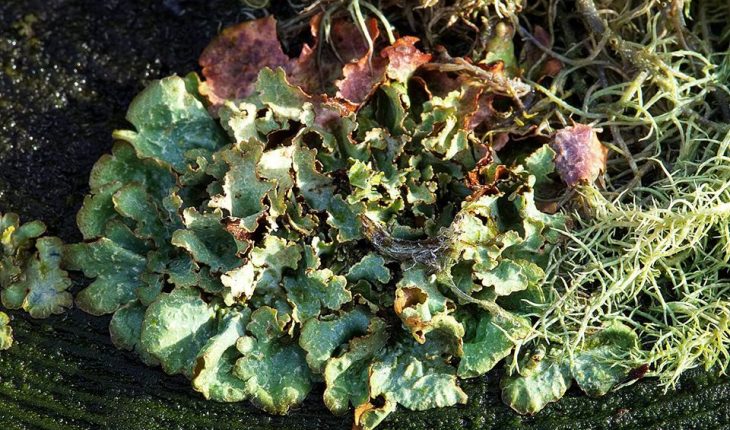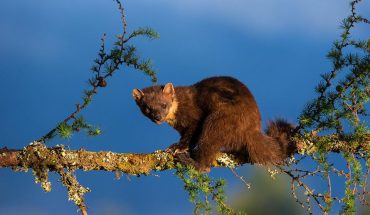Contents
Foreword
Whilst Scotland’s outstanding scenery is internationally renowned, the fact that its lichen communities are also of international importance is scarcely recognised. In commissioning this book from one of Britain’s leading lichenologists, Scottish Natural Heritage is seeking to put that right.
Oliver Gilbert outlines their place in folklore and their role in the one-time world-famous Harris Tweed economy, but it is when he comes to describe some of the special places where lichens thrive that one senses just why these strange organisms make his spine tingle.
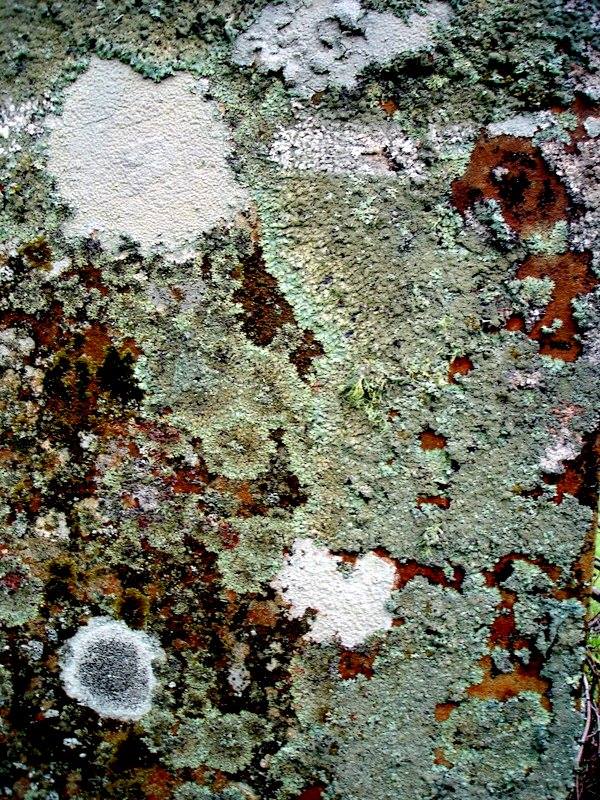
Those venturing onto the high ground of the Cairngorm plateau will find themselves in a lichen-dominated wilderness, which Oliver and his friend Brian Fox did much to describe. Some parts of the Celtic rain forest, their trees ‘dripping’ with lichens, are so remote they are still not fully explored for lichens, but you do not have to know the names of the lichens to know that you are somewhere special.
The importance of some habitats has only been recognised in recent years. It was not until the late 1970s that Brian Coppins of the Royal Botanic Garden Edinburgh realised that the twigs of Atlantic hazelwoods supported a distinctive lichen flora. One species discovered and named by him and Peter James of the Natural History Museum was the white-script lichen – probably endemic to Scotland.
Since Victorian times, lichens have been known to be good indicators of air pollution – rather like the canary down the coal mine. Back in those times, sulphur was the problem but this has largely been conquered with the clean air acts. Now the problems include nitrogen from both agriculture and vehicle exhausts, and global warming which may account for the apparent disappearance of certain species of snow-bed lichen in the Cairngorms. Global measures are required to conserve such lichen communities.
Lichens colour the landscape, especially where the air is ‘pure as wine’, but look closely at bark, wood and rock and you will see just how beautiful their intricate structures can be. Their fruit bodies, through which reproductive spores are produced, differ on the various species, some being like miniature jam tarts, others tiny volcanoes and, perhaps most fascinating of all – the ‘writing’ lichens – so called because of their resemblance to hieroglyphics.
Lichenology is a neglected science, but Oliver’s account conveys the excitement of the chase.
Lichens in Scotland
Lichens are more abundant and better developed in Scotland than in other parts of the British Isles. Many people notice lichens for the first time as they see dense, shaggy coats on tree trunks and rocks – ‘old man’s beard’ hangs to a foot long off branches. Spectacular patches of scarlet-tipped lichens are often found on heathland. Those venturing onto the high ground of the Cairngorm plateau, will find themselves in a wilderness dominated by lichens.
In the past lichens played an important role in the Scottish economy. They were used for dyeing, both on a domestic scale and in supplying the manufacturers of the world-famous Harris tweed with their shades from orange through to brown. Even now you can bring back a jersey knitted with lichen-dyed wool as a memento of a visit to Scotland. The only naturalised reindeer in Britain are found in the Highlands where they live for much of the year on the lichen known as ‘reindeer moss’.
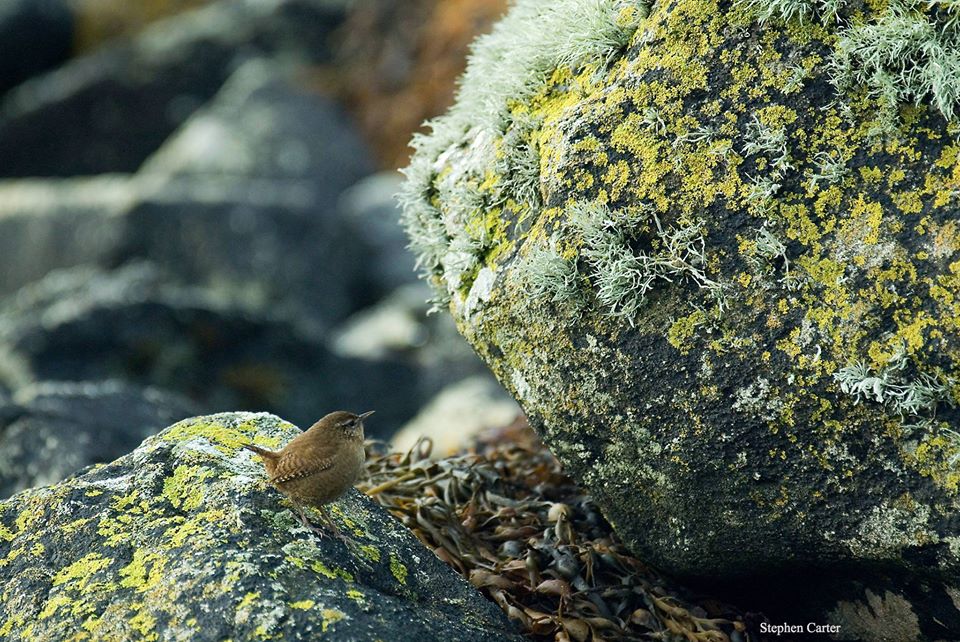
From the point of view of Scotland’s natural heritage, many of the lichen communities in western Scotland are unequalled anywhere in Europe and so are of international importance.
Particularly Scottish are:
- the Celtic rain forests,
- Caledonian pinewoods,
- Atlantic hazelwoods,
- the lichens of the vast bird colonies on islands such as St Kilda,
- the montane communities are exceptional, where a single mountain can exceed in diversity the combined lichen floras of Snowdonia and the English Lake District.
This booklet provides an introduction to these riches.
What is a lichen?
A lichen (pronounced li’ken) is a dual organism consisting of a fungus and a photosynthetic alga or blue-green alga (cyanobaterium) which live in close association. The photosynthetic partner manufactures food for the whole lichen and the fungus provides a stable, protective environment for its alga. The fungus forms the main body of the lichen, and in most cases, the alga lies sandwiched between upper and lower fungal layers. Where a lichen has a green algal partner, the green algal layer can often be seen by scratching the upper surface of the lichen. Lichens are often quoted as a classic example of symbiosis – a mutually beneficial partnership between two organisms.
Other interesting facts:
- • some crust-like lichens on rocks have a ‘legendary slow’ growth rate, sometimes as little as 0.1 mm per year,
- • in undisturbed conditions, some rock-dwelling lichens can survive to a great age (many hundreds of years) and are among the oldest living organisms in Scotland,
- • many lichens have a remarkable tolerance to drying out, during which state they can survive extremes of heat and cold; this means that they can tolerate being scorched by the sun in summer months, yet also survive ice and snow, and are therefore able to grow higher up in the mountains than other plants.
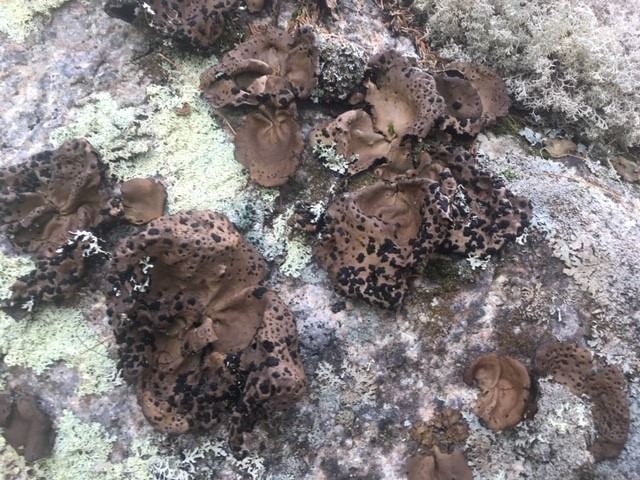
Scottish lichens are many colours: white, grey, black, yellow, orange, sulphur, apple-green, pink or scarlet. Most grow as crusts, some are leafy (foliose), while others are shrubby. They are completely different from the mosses and liverworts with which they often grow. The majority of mosses and liverworts are green, leafy and photosynthesise their own food.
How lichens multiply and disperse
The upper surface of many lichens bears special structures which appear as miniature jam tarts, delicate cups, or tiny volcanoes with a minute pore at the tip. Some are brightly coloured, others more muted, and many are black. A special group of crustose lichens found on the smooth bark of hazel, rowan, holly and ash (particularly in the west) are known as ‘script lichens’ as they have short, scribble-like lines scattered over their surface. All these structures are known as ‘fruit bodies’ as they forcibly discharge tiny spores to a height of a few millimeters where they have a good chance of becoming airborne.
Reproduction by spores is a risky business as, on landing and germination, they need to meet the right algal partner before they can form a new lichen.
Many lichens increase their chance of successful reproduction by producing special parts that become detached and grow into a new plant (propagules) containing both alga and fungus. The most common are powdery structures (soralia) that develop as pustules on the upper surface. These release small clumps of algal cells (soredia) held together by a web of fungal threads (hyphae). The other structures for vegetative reproduction, also unique to lichens, are isidia. These are fragile, peg-like outgrowths on the upper surface which contain both partners. Numerous lichen isidia and soredia are picked up following stormy nights by pollen-sampling equipment run for hay-fever sufferers in a rooftop location in Edinburgh
If you look through a hand lens you will see that the upper surfaces of lichens with their varied fruit bodies, soralia, isidia and range of hues look extremely beautiful.
Use of lichens for dyeing
By far the most important use of lichens in Scotland was for dyeing, first as a cottage industry and later on a commercial scale. The lichens were scraped off the rocks using metal hoops, spoons and, in the poorer districts, seashells. Here is an account of lichen dyeing from Shetland records:
‘My aunt was the one for making dyed yarn. I mind seeing her work with yon scrottyie, yon grey lichen you scrape from the stanes. She made up a brawly thick gruel, ye ken, and had it boiling abun the fire in a muckle three-taed kettle, with layers of yarn packed between. A few hanks came out soon and the rest she’d leave a while longer to get a darker shade. She’d knit her stockings striped in different shades of brown’.
Venables 1956, Life in Shetland: a world apart
As late as the 1950s, black, three-legged iron pots used for boiling lichens could be seen outside many crofts in the Hebrides. The browns and fawns of Harris tweed were produced from a closely-related group of lichens called crottle. The last of a long line of commercial dyers and hand weavers of this cloth on Harris ceased production in 1997.

The other main lichen dye produced in Scotland and, exported all over Britain, was orchil or cudbear, which gave a coveted purple or red. Its commercial value was so great that a factory producing this household dye was set up in Glasgow covering 17 acres and processing 250 tons of lichen each year. Gathering the lichen provided considerable employment in the Highlands. This gave rise to the Scottish saying:
‘Cattle on the hills, Gold on the stones.’
What’s in a name?
Many Scottish lichens have three names:
- • a Gaelic name, once regularly used by the Highlanders and Islanders, but now forgotten and only found in dictionaries. They used crottle as a general term for lichens,
- • a Common name which refers to some conspicuous feature or property. Two of the examples given have old names, dating back to Mediaeval times, when physicians practised a ‘Doctrine of Signatures’. They believed that parts of the plants that bore some resemblance to parts of the human anatomy had special properties to heal ailments occurring in the affected parts of the human body. Anyone with a lung complaint, for example, would be made a concoction of lungwort,
- • the scientific Latin name which is also descriptive of the species if you are a classical scholar.
The Common names of many Scottish lichens are pure poetry: Sunburn, Rock Hair, Yellow Candles, Golden Pine Lichen, Little Clouds, Oak Moss, Crab’s-eye, Coral Crust and Sea Ivory.
- Gaelic: Crotal Coille – wood crottle
- Common: Tree Lungwort – due to the underside of its lobes bearing a resemblance to the inside of a lung,
- Latin: Lobaria pulmonaria
- Gaelic: Lus Ghoinnich – a plant for wounds,
- Common: Dog Lichen – a cure for the bite of a mad dog – due to the underside bearing fang-like structures,
- Latin: Peltigera canina
- Gaelic: Crotal Dubh – dark crottle,
- Common: Heather-rags – ragged and grey, growing amongst the heather,
- Latin: Hypogymnia physodes
The exceptional Scottish climate
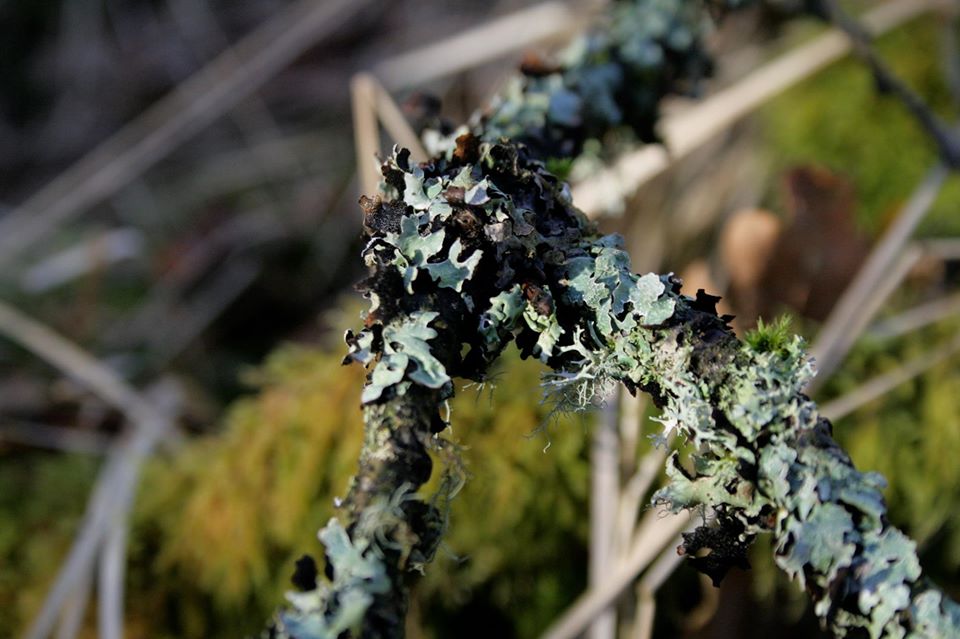
Lying on the western seaboard of Europe, in the track of the Atlantic depressions, Scotland has a climate that is unique in Europe. It is described as extreme oceanic i.e. it is influenced by the surrounding seas. The diagram opposite shows how even the Scandinavian fjords, Brittany, Cornwall and Wales have lower oceanicity scores. High values indicate a combination of extreme humidity, abundant rainfall and number of rain days (days when rain falls), persistent cloudiness, cool summers and mild winters. The Gulf Stream helps to make the climate warmer with the result that along the west coast there are numerous sites, such as Inverewe Gardens, where palm trees flourish.
Woodland lichens which grow best in, or require, a mild, wet climate thrive here. Oak woods bordering the western sea lochs are ‘dripping’ with lichens that are rare in Europe as a whole.
A number of these lichens are endemic to Scotland which means they occur nowhere else in the world.
The unusual climate affects all lichen communities. The mountains in the west experience a lower snow cover than those elsewhere and their rocks are so continuously wet that lichen species normally restricted to damp rock are ubiquitous. The wet ground favours peat formation so some flat areas are covered with a community known as blanket bog. The sodden moorland that results has its own suite of very beautiful lichens which can be seen beside trackways or around the margins of disused peat cuttings. These include clumps of reindeer lichens, patches of pixie-cup and horn lichens (Cladonia species).
Air as pure as wine?
Most people are aware that lichens do not grow well where there is air pollution. They are like the canary down the coal mine – detecting air pollution at lower levels than many other organisms. In 1972 school children throughout Britain mapped lichens around their homes which helped produce the ‘Mucky air map of Britain’. It revealed that the largest reservoirs of pure air are in Scotland, which, apart from Scotland’s Midland Valley, appears to enjoy air as pure as wine. This is not quite the full story however.
The school children’s map reflected the distribution of sulphur dioxide to which virtually all lichens are sensitive. However there are several different types of air pollution. Despite a big drop in sulphur dioxide levels, acid rain which travels a lot further, is still affecting certain woodland lichens – for instance along the southern edge of the Highlands and the remoter areas of the Cowal peninsula. In addition, residents in the Cairngorms have reported up to five centimetres of highly-acidic, black snow falling several times a year. When it melts this produces a pulse of toxic water, but its effect on lichens is not known. A further cause of concern is increasing long-distance nitrogen pollution from sources associated with industry, transport and agriculture.
This goes to show that we must not be complacent about air pollution effects on Scottish lichens and assume that remoteness from sources will always protect them. But for the time being, areas north of the Highland Boundary Fault enjoy some of the cleanest air in Europe.
Important habitats for lichens
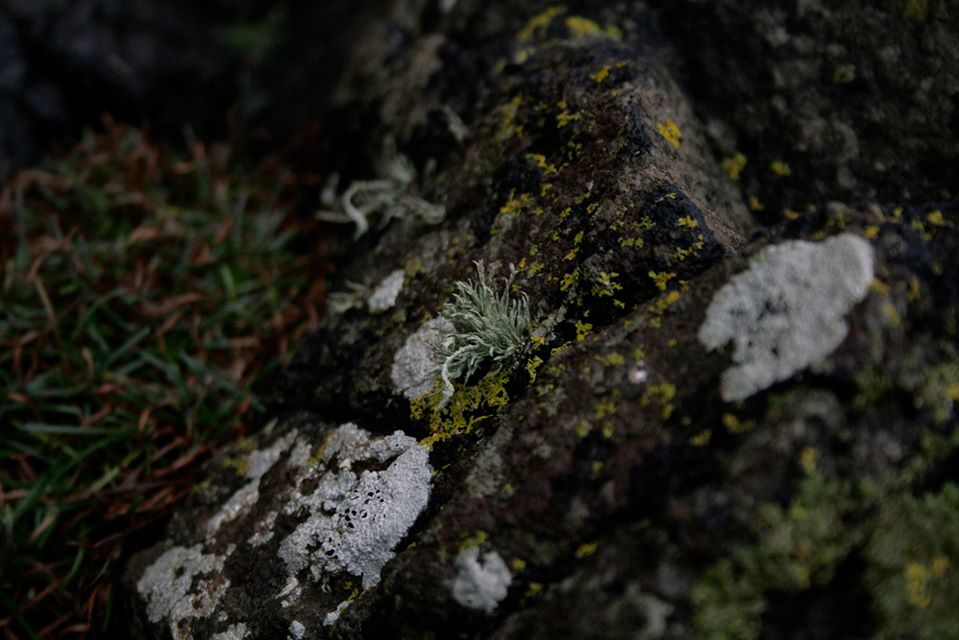
The Celtic rain forest
The west of Scotland holds very wet and mossy, oak and hazel woods which are internationally important for their lichens, mosses and liverworts. Their higher plant flora is not particularly special. It is the epiphytes (plants which grow on other plants without being parasitic) clothing the trees that are exceptional. The woods are best developed along the sides of sheltered sea lochs such as Sunart, Shiel and Moidart. Some of these woods are so remote that they still have not been fully explored for lichens.
It is quite an experience to visit these Celtic rain forests. The trees are of only a moderate size and the first impression is of how mossy the habitat is – a deep blanket of moss covers the floor, climbs the tree trunks, festoons horizontal boughs, and even extends into the canopy. By absorbing rain and mist, then releasing this moisture slowly, the blanket of mosses and liverworts helps maintain the very high humidity. The moss forms the base on which the rare lichen communities are found, especially one called the ‘Lobarion’ after its most conspicuous family. There are four species of lungworts (Lobaria) that can grow to the size of dinner plates. Growing with these are lead-grey Pannaria, Parmeliellaand Degeliaspecies, dark Stictas and jelly lichens, Biatora sphaeroideswith pink fruits and Dimerella luteawith bright yellow ones. The trees often have a skirt of dog lichen (Peltigera) which has abundant shield-like, chestnut-coloured fruit bodies. The weight of the lichen cover eventually becomes so great that the moss peels off the trees, leaving heaps of these internationally rare lichens around their base.
You do not have to know the names of the lichens to realise that you are somewhere very special.
The best lichen sites are on sunny, south-facing slopes while the rare Atlantic mosses and liverworts, which need more moisture, favour northern aspects. The optimal sites for lichens are also well lit being around the edge of glades or along woodland margins.
While the whole area is a lichenologists’ Mecca, sites where burns and gorges cut through the woodland are particularly special. Here, in ravines full of tangled vegetation, there is a wider range of trees – oak together with ash, elm, cherry and willows. Ash and hazel have a more alkaline bark and are a home to ‘jewels’ such as the handsome Specklebellies (Pseudocyphellariaspecies) and Blackberries and Custard (Parmentaria chilense).
On higher ground the oak woods give way to grazed birch woodland which is a different, but equally distinctive, lichen-rich variant of Celtic rain forest. It is dominated by silvery-grey leafy species many of which grow directly on tree bark. This bark has a high acidity due to ‘washing out’ or leaching by the high rainfall.
These western woods are far from being undisturbed relics of the ancient forest. In times past, these woods were extensively coppiced, and the wood used for charcoal, tanning and bobbin-making. This activity ceased about 150 years ago, but it is thought there was always sufficient wildwood remaining for the entire suite of rare lichens to survive. Today the best examples of these woodlands are managed for nature conservation.
Caledonian pinewoods
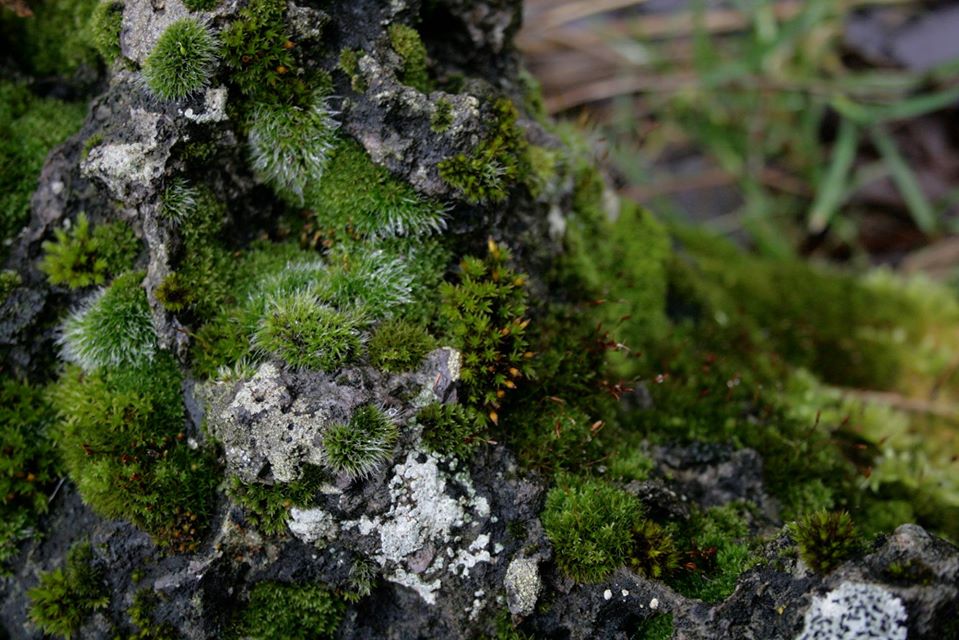
It is a myth that the Scottish Highlands were once covered by a vast pine wood called ‘The Great Wood of Caledon’. Pollen analysis tells us that pine has always been patchily distributed. The native pinewoods are the surviving fragments of the ancient Caledonian pine forests. Today pinewoods cover an area of around only 10,000 hectares. Some of their strongholds are Glen Affric, the Black Wood of Rannoch, Rothiemurchus, and hill slopes beside Loch Maree. The woods are composed of Scots pine Pinus sylvaticasubspecies scotica. This is restricted to Scotland, has short needles and maintains a pyramidal form until late in life when it becomes round-headed.
These woods have so far yielded more than 430 epiphytic lichens of which 222 have been found on pine. The rest are on associated rowan, birch and juniper. Seventeen of these lichens are found nowhere else in the British Isles so this is another particularly Scottish community.
Lichen cover is most often best developed on ancient ‘granny pines’, in sheltered situations. Here the bark plates are welded together by thick, multi-coloured lichen crusts, scrambling leaf-like species and festoons of yellow-grey Usneaand horse-hair brown Bryoria. The rare Witches’ Hair (Alectoria sarmentosa) occurs in spectacular swathes on the lower branches of pine in valleys in the west.
A major difference from deciduous forests is that a high proportion of the lichens are found on stumps and standing dead trees. This habitat may be very sparse, less than one tree per hectare, but is of the utmost importance as slowly decaying pines that have lost their bark hold many of the pinewood specialities. These standing pillars of dead wood, and recently fallen ones, are picturesquely known as the ‘bones of the forest’. Pinhead lichens looking exactly like their name, often form swards on sheltered parts of the ‘bones’. Being small it is often easiest to locate them by manoeuvring so that a patch of bark is seen against the sky. If present, they can be seen in silhouette. Up to eight types of Pinhead lichen may be present and can be distinguished by their colours – green, yellow, rusty, grey, black or brown.
Atlantic hazelwoods
Hazel forms a lower storey in oak woods or is a hedgerow shrub growing throughout most of Britain. In the west of Scotland, however, it forms pure woods on steep slopes facing the sea. Hazelwoods have probably occupied these sites for 9,000 years, the extreme exposure preventing invasion and over-topping by other trees. Hazel enjoys the benefit of being able to persist indefinitely under grazing and has a partiality for soils developed over basalt that are widespread along the coast around Oban and on the islands of Mull, Eigg and Skye.
The lichen interest of these pure hazelwoods only started to be recognised in the late 1970s when Brian Coppins, lichenologist at the Royal Botanic Garden, Edinburgh, realised that they contained many distinctive species, some new to Britain, others new to science. An example is the White Script lichen (Graphis alboscripta) which has so far not been found outside this habitat and is regarded as a Scottish endemic.

On entering a hazelwood the ‘brush’ of thin stems that make up a high proportion of each individual can be seen to be covered with a dense, pale, mosaic of small lichens which give the bark a silvery hue. These can be distinguished by subtle shades of colour and the small dots, scribbles and tiny ‘volcanic craters’ through which their spores are ejected.
High-quality, old-growth hazelwoods contain trunks of all sizes including very large individuals with rough moss-covered bark which are around 70-100 years old. These support a very different range of lichens to those found on the smooth thin stems. Here large leafy species of the ‘Lobarion’ are dominant. Despite the woods having the appearance of a past history of coppice management this is not the case. On Eigg, Cleadale Woods were last exploited during the 1940s when a wartime coal shortage led the crofters to cut the larger stems for firewood.
The best season to explore this unique habitat is late spring, before the interior becomes shaded by the expanding leaves. At this time the woods are bright with primroses, violets and bluebells, sunlight filters through the branches, and birdsong is at its height. To investigate a lichen flora of international importance against this background is magical and a particularly Scottish experience.
Alpines galore
Only a tiny fraction of Scotland is over 914 metres high (or 3,000 feet if you are a Munroist) but this small area, above the upper limit of heather, is home to a vegetation dominated by lichen, moss and sedge heath. This is the nearest we have to tundra in Britain. The Scottish montane lichen flora comprises about 400 species and includes nearly a third (52) of the British Red List lichens so it is very special (see p34). It is possible to walk all day in the hills and encounter only common upland species. The rarities have particular habitat requirements that need to be appreciated and some of these are outlined.
The Cairngorm Plateau is the place to study lichens associated with late snow patches. These species are left-overs from the last Ice Age. The largest patches are almost permanent, melting on average once every 25 years. The lichens are concentrically-zoned around them depending on their tolerance to snow lie; the inner-most ones can survive years of burial. Ice-cold melt-water streams issuing from the toe of the snow patches are also good lichen-hunting grounds. Lichens form a skin over the soft ground or occur on the moss cushions covering small boulders. The handsome, green Lecanora leptacinais absolutely restricted to these sites. Recently moss cushions were found supporting an undescribed lichen with tiny reddish fruits and the discoverer, Alan Fryday named it in honour of his young daughter, Amelia.

A curious factor, which restricts the abundance of lichens on the granite boulders that litter the summit plateau, is abrasion from windblown gravel and needle-like ice crystals which blast and erode during winter blizzards. Several of the rarest lichens of this high ‘tundra’ have not been seen for over 20 years and are suspected of being casualties of global warming.
In contrast, Ben Nevis in the damper, milder west, supports a somewhat different alpine lichen flora. A species more common here than elsewhere is Catolechia wahlenbergii. This elegant lichen forms vivid yellow rosettes in dark crevices. It is protected under Schedule 8 of the Wildlife and Countryside Act 1981, as amended, and therefore has been given an English name. After some discussion it was named ‘Goblin lights’.
As Ben Nevis is the highest point in Britain it was hoped that a recent survey of the summit area would produce at least one special lichen. We were not disappointed and in 1990 the first UK record of the suitably named Staurothele arctica was made a few yards from the summit cairn.
A feature of these western hills that sets them apart from those in the east is that lichens which grow on the ground are rare. Instead, carpets of the Woolly Hair Moss (Racomitrium lanuginosum) form an undulating mattress over the ground. The distinctive lichens of the western Highlands mostly grow on rock.
The mountains considered so far have all been acid, which is the norm for the Highlands. But the foremost areas for arctic-alpines, flowering plants, mosses, and lichens alike, are those where calcareous rocks occur. The outstanding locality for this feature is the Breadalbane range in Perthshire. Here extensive deposits of soft, calcareous schist outcrop over a distance of 11.2 kilometres reaching a height of 1219 metres at one point. For two centuries botanists have been making pilgrimages to this area and, though the higher plants are now well-known, the lichens, which are twice as abundant, are still being investigated.
Calcareous outcrops on these mountains are restricted and often stumbled on by chance. But once such a site has been located it pays to spend several hours with hand lens and kneeling mat examining every ‘square inch’ of its surface. The rewards are great, ledges are crowded with rare and beautiful species that scramble over rock, soil, dead vegetation and moss. The communities are reminiscent of a minature rock garden and they have probably been growing undisturbed since the end of the Ice Age.

It is not just the outcrops that hold arctic-alpine lichens. The lichens extend into burns, lochans, summit grasslands and bare, gravelly areas. There is a lifetime of investigation to be undertaken. It is every lichenologist’s dream to discover a new ‘Ben Lawers’. Just one such area has come to light in recent decades – 40 kilometres away in the remote Ben Alder range.
The coast
Several features combine to make the Scottish coast of special interest to lichenologists. The bird islands of St Kilda, North Rona and the Flannans; the machair; and the vast, east coast sand dunes deserve special mention.
The lichens produce distinct colour bands on coastal rocks:
- • A black zone at sea level, above that,
- • an orange zone heavily influenced by salt spray, and then,
- • an upper, grey zone which is richest in lichens.
Sea bird cities
Beyond the Outer Hebrides lies an arc of small remote islands known as the Furthest Hebrides. The islands are lapped by the waters of the Arctic Ocean, so sea temperatures remain low even in summer. These islands are home to millions of seabirds, their nests line the cliffs, the air is full of their cries, and they perch on every rock covering them with their droppings. It is these guano-spattered boulders that are special for the lichens. Each can support up to 25 species including such rarities as the golden-coloured Caloplaca scopularis, the brown Amandinea coniopsand the sulphur-tinted Lecanora straminea. This is the main British habitat for these three species.
Around these remote, storm-lashed islands the coloured bands are uplifted so the black zone on the west coast of North Rona extends vertically to 16 metres above sea level, compared with a sheltered shore on the mainland, where it might be only one metre deep.

A typical lichen of the grey zone is Sea Ivory Ramalina siliquosawhich forms dense shaggy swards in places exposed to the wind. On St Kilda, the agile Soay sheep supplement their diet by grazing on these swards during winter.
Machair
Machair is a habitat unique to the west coasts of Scotland and Ireland. It develops where calcareous shell-sand blows inland converting the wet, acid, peaty landscape into a well-drained, flowery pasture. It is a feature of the west coast of the Inner and Outer Hebrides with islands such as Coll, Tiree, South Uist and Harris supporting the finest examples.
The short, species-rich turf is sufficiently open to support a lichen community that has many species in common with chalk grassland. The richest sites are associated with low, partially sand-covered outcrops where crevice-loving species such as the socket lichens (Solorina saccata, S.spongiosa) and the apple-green Thrushwort (Peltigera leucophlebia)can find a foothold. Early summer is the time to explore the machair. The flowers are out, blue butterflies are on the wing, white surf lines the shore and the lichens – well, who knows what you will find?
East coast dunes
Sandy beaches backed by dunes are a characteristic feature of Scotland’s maritime scenery. The largest of these are on the east coast at Culbin, Forvie and Tentsmuir. These vast, remote dunes are exciting places where the lack of grazing, trampling and fire has resulted in the lichen swards developing an unusual luxuriance. Reindeer lichens, for example, form a deep, extensive white carpet spreading into the conifers planted many years ago, and suppressing all other growth.
Over 30 species of the lichen genus Cladonia have been recorded at Culbin, including a northern element better represented here than anywhere else in Britain.
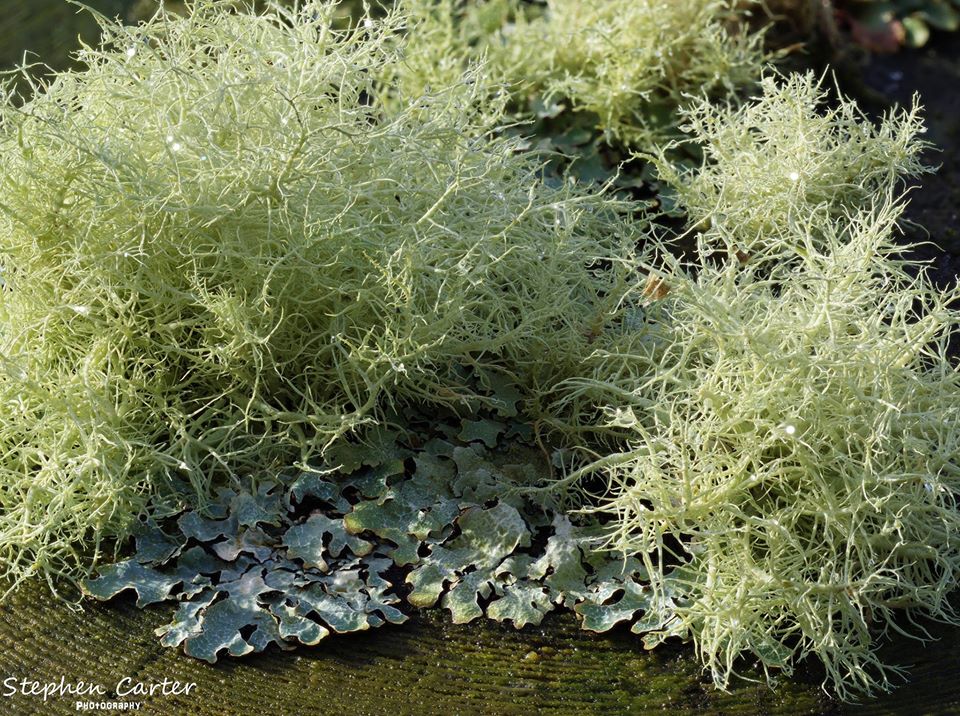
A number of the ground-dwelling lichens, favoured by disturbance, are found along the edge of forestry tracks.
At Cuthill Links, on the north side of the Dornoch Firth, the lichen interest is concentrated on sandy valley floors separated by gorse-covered dune ridges. Here is the best place to go to see the curious phenomenon whereby normally alpine species descend to sea-level in the far north of Scotland. Lichens typical of mountain summits, such as Thamnolia vermicularis, which looks like a cluster of white worms, are found here. They grow luxuriantly on the sand within sight and sound of the sea. These east coast dune lichen communities have links with those on the Danish coast.
Blanket bog
Most level ground in the west of Scotland is naturally covered with a deep layer of peat, known as blanket bog. The surface vegetation, a mixture of Bog Moss (Sphagnum), various types of heather and cotton-grass, is very wet – too wet for most lichens. Lichens find an opening, however, where there has been disturbance perhaps associated with peat cutting, drainage or fire. Drier faces, ridges and baulks of peat are rapidly colonised by a range of attractive species. Particularly noticeable are a suite of red-fruited Cladoniaspecies with common names such as Scarlet cups, British soldiers or Bengal matches. Others have brown fruits and are branched like deer’s antlers, coral, or have fantastic ‘Disney-world’ shapes. Another series, the cup-lichens, again Cladoniaspecies, have fruit bodies resembling trumpets or goblets.
These moorland lichens have attracted the attention of poets. Wordsworth wrote of them:
‘Ah me what lovely tints are these,
Of olive, green, and scarlet bright!
In spikes and branches and in stars,
Green, red, and partly white.’
Though Cladonia species are dominant, and the first to attract attention, others are equally attractive. Very wet peat is the habitat of Pycnothelia papillaria, the thallus (plant body) of which has been compared to babies’ molar teeth, and it is always a thrill to come across the large coral-pink fruits of the Heath Lichen (Icmadophila ericetorum).

Conservation
It should be clear by now that a number of lichen habitats in Scotland are of international importance, being richer and more extensively developed than anywhere else in Europe.
Happily, past threats from air pollution, inappropriate forestry, and sheer ignorance are receding fast. Unfortunately a new threat, global warming, is beyond the capability of national conservation bodies to counter and may already be responsible for the recent extinction of four high-alpine lichens, Bellemerea alpina, Brodoa intestiniformis, Snow Caloplaca (Caloplaca nivalis), Alpine Moss Pertusaria (Pertusaria bryontha) and the decline of several others.
Nitrogen pollution arising from industry, agriculture and transport is increasingly causing concern. Vigilance is still required at a site level with regard to potentially damaging operations and changes.
Examples of this are:
- • hydroelectric schemes,
- • ski development,
- • road projects,
- • the spread of rhododendron,
- • lack of continuity of veteran trees, and
- • the decline of wayside trees.
The promotion of lichen conservation in Scotland is shared by a number of organisations which keep in close contact despite lichenologists being thin on the ground. Most major threats get identified and their effects mitigated.
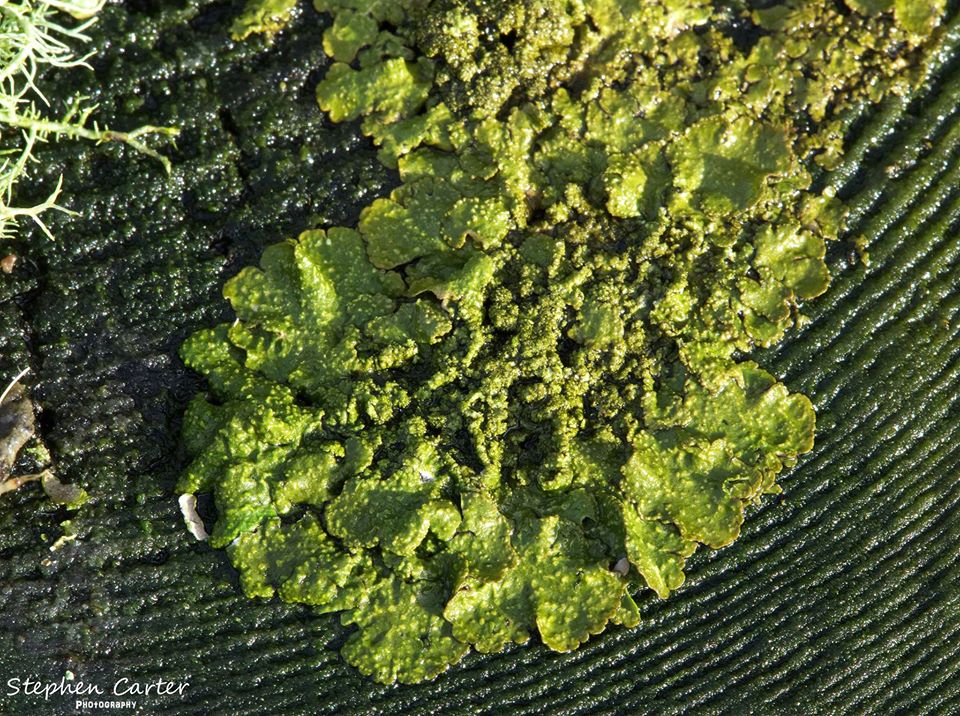
The British Lichen Society recruits amateur and professional lichenologists, helps train them through courses, and holds field meetings to explore little-known areas. It has an active Conservation Committee, and provides generally stimulating conditions for those wishing to pursue the study of lichens.
The Royal Botanic Garden Edinburgh provides advice through its resident lichenologist, at present Dr Brian Coppins. Preserved specimens of most of Scotland’s lichens can be seen in the herbarium there. These provide a source of reference for both historical and modern records, and can help in identification work.
Biodiversity Action Plan and the Red Data List
In 1996 a Red Data Book of Lichens in Britain was published. It contained descriptions of 208 of Britain’s rarest lichens. Each of these lichens was placed in one of the following four internationally recognised threat categories: Extinct (29), Critically Endangered (27), Endangered (30), Vulnerable (91) and Rare (31). Many are montane calcicoles but even more occur in sheltered valley woodland along the west coast where the combination of a high rainfall, cool summers and mild winters favours the development of communities rich in spectacular genera containing blue-green algae.
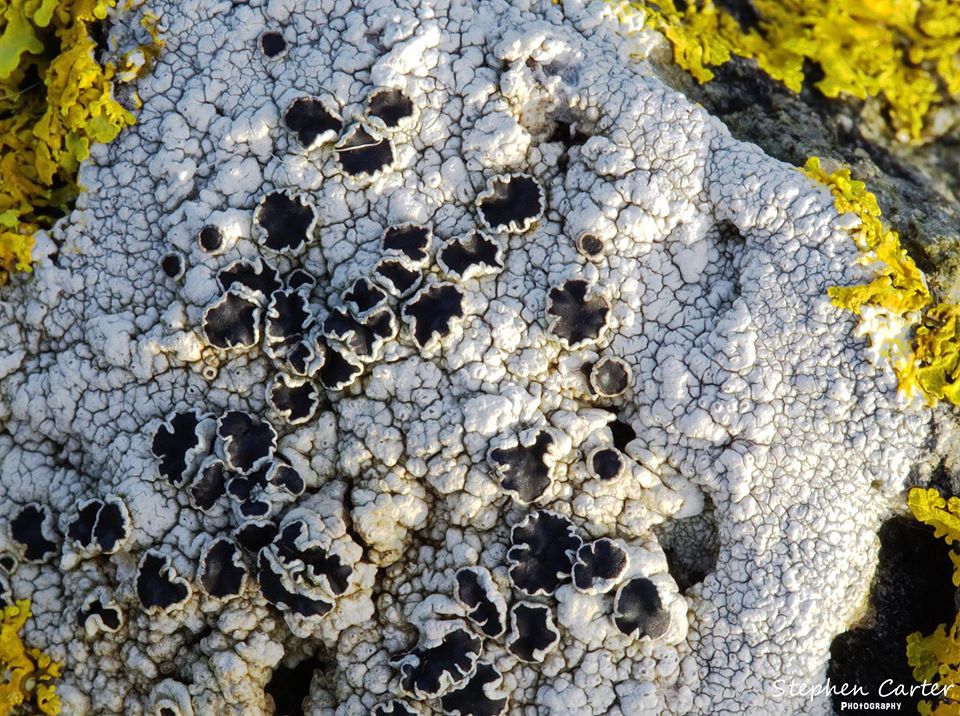
To promote the conservation of 40 of the most important lichens, Scottish Natural Heritage funded indepth studies that involved the production of Biological Action Plans or Species Dossiers. These comprised a review of the literature, herbarium searches, and intensive fieldwork. The results were often surprising – certain species turned out to be more widespread than expected, for example, Stump Lichen (Cladonia botrytes, Gyalideopsis scotica) while others were in steep decline (Bacidia incompta, Cladonia peziziformis). When deciding on conservation priorities there is a difficulty. Should resources be directed towards saving species on the verge of extinction or are these at the edge of their range and unlikely to respond to conservation measures? It is probably wisest to concentrate on Scottish endemic species, the White Script Lichen Graphis alboscripta and Halecania rhypodiza, or those such as Norwegian Specklebelly (Pseudocyphellaria norvegica) for which Scotland is its European stronghold.
